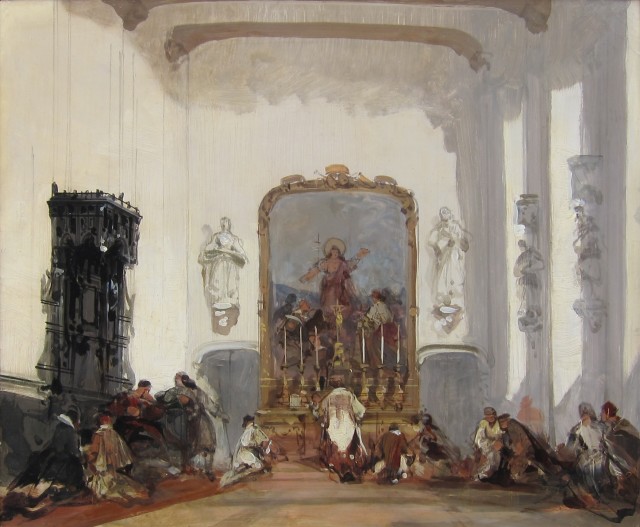David Roberts, R.A.
(1796-1864)
Scottish painter. The son of a shoemaker, he was apprenticed to a house-painter. From 1816 until 1830 he was employed in the theatre to design and paint stage scenery, first in Edinburgh and Glasgow and after 1822 in London. While in Scotland he met and worked with Clarkson Stanfield and later collaborated with him in London on dioramas and panoramas.
Roberts exhibited his first easel painting in London in 1824 and at the Royal Academy in 1826 (View of Rouen Cathedral, no. 221; untraced).
In common with other contemporary painters of picturesque topography and architecture, such as Stanfield, J. D. Harding and James Holland, Roberts undertook journeys abroad in search of exotic or impressive subjects. He made his first visit to Spain in 1832-3, one of the first British artists to travel there. From Spain, Roberts briefly visited Morocco; later he made watercolours from sketches by other artists for engraving in T. H. Horne's Landscape Illustrations of the Bible (1836). These encounters with the oriental world, in the context of contemporary interest in exotic places, especially the lands of the Bible, encouraged him to undertake a tour of the Near East in 1838. He was one of the first independent and professional British artists to experience the Orient at first hand.
Roberts arrived in Jerusalem at Easter 1839, having travelled from Egypt via Sinai and Petra; later he continued north to Lebanon and departed from Beirut in May. His drawings show his ability to create visually effective compositions from a variety of subjects.
Roberts's eastern compositions reached a wide audience through 247 lithographs made by Louis Haghe. Originally published in parts, these were later bound into six volumes as The Holy Land, Idumea, Arabia, Egypt and Nubia (1842-9.
He was elected ARA in 1838 and RA in 1841.
